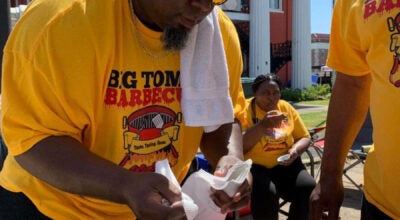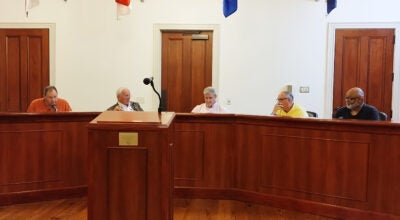Severe weather week: Seconds matter in tornado warning
Published 1:32 pm Wednesday, February 19, 2014
Alabama has two main tornado seasons. The months of March through May are known as the Spring Severe Weather Season. A Fall Severe Weather Seasons also exists from November through mid-December.
A tornado is defined as a violently rotating column of air that is in contact with the ground. A funnel cloud is circulation that does not reach the ground.
Wind speeds in tornadoes can range from 65 miles per hour to 318 miles per hour, the highest tornado wind speed ever recorded.
A Tornado Watch means that conditions are favorable for the development of severe thunderstorms and tornadoes in and close to the watch area. A watch is normally issued for a large area covering numerous counties. The watch is intended to give people time to review safety rules and plan. The sky may be sunny, but weather changes can take place rapidly.
A Tornado Warning means that a developing tornado has been detected by National Weather Service Doppler Radar or has been reported on the ground by reliable sources. A Tornado Warning is typically issued for a portion of counties at a time and usually lasts no more than 45 minutes. If a Tornado Warning is issued for your county, you should seek shelter immediately.
If you see a tornado or feel threatened, move to a safe place immediately, as precious seconds can save your life.
If you are in a home or small business during a tornado, go to the basement or to a small interior room such a closet, bathroom or interior hallway without windows on the lowest level. Put as many walls between yourself and the outside as possible.
If possible, get under something sturdy, such as a heavy table or use a mattress to protect yourself from flying debris.
Most injuries associated with high winds are from flying debris, so remember to protect your head. If available, put on a bicycle or motorcycle helmet to protect yourself from head injuries.
If you are in a large business, school, hospital, shopping center, factory or similar structure, go to the designated shelter area. If a shelter area is not available, the best place to go is an interior hallway on the lowest level.
Stay away from the structurally weaker portions of buildings, such as windows and rooms with expansive roofs, which are more likely to collapse when tornadoes strike.
Do not waste time opening windows in an attempt to prevent damage to a building. The old wives’ tale that damage could result from rapid pressure changes during a tornado is not true. It will not make any difference in a tornado if the window is open or not. The safest course of action is to take shelter immediately during a tornado warning in your area.
If you are in a mobile home, get out and take shelter in a sturdy building or storm shelter. If there is not one nearby, take shelter in the most interior room that has no windows, such as an interior bathroom or closet.
If you are caught in your vehicle, get out and into a sturdy shelter. If one is not available nearby, get to a low spot and cover your head from flying debris. Do not take cover under an overpass as this does not provide adequate shelter during a tornado and can actually cause increased wind speeds due to a tunneling effect.
The week of Feb. 16-21 has been designated “Severe Weather Awareness Week” in Alabama.






